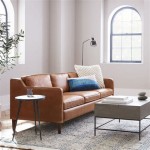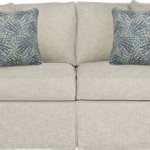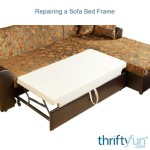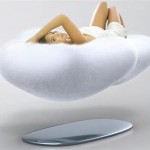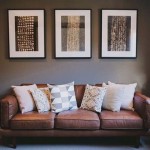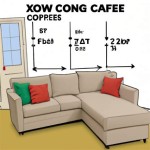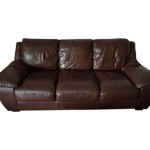The Enduring Appeal of Red Sectional Sofas
Red sectional sofas represent a bold and versatile furniture choice, capable of invigorating any living space with a touch of drama, sophistication, or playful energy. Beyond their aesthetic impact, understanding the nuances of color psychology, material selection, and design compatibility is crucial to effectively integrating a red sectional into a cohesive interior design scheme. This article explores various facets of red sectional sofas, examining their design variations, practical considerations, and potential to transform the ambiance of a room.
The color red, often associated with passion, energy, and excitement, can significantly influence the mood of a room. A red sectional sofa immediately becomes a focal point, drawing the eye and establishing a strong visual presence. While its vibrancy can be stimulating, it's important to consider the intensity of the shade and its interaction with other colors in the room. Darker reds, such as burgundy or oxblood, can evoke a sense of luxury and sophistication, while brighter, more saturated reds, like cherry or crimson, create a lively and energetic atmosphere. The choice of shade should align with the desired overall aesthetic and the function of the space.
Understanding the Psychology of Red in Interior Design
The psychological impact of color is well-documented, and red is particularly potent. Its stimulating effect stems from its association with increased heart rate and adrenaline flow. In interior design, red is often used sparingly to add warmth, excitement, or a touch of drama. A red sectional sofa, being a substantial piece of furniture, commands attention and can significantly impact the perceived temperature and energy levels of the room. Therefore, careful consideration must be given to balancing the intensity of the red with more neutral tones to prevent overwhelming the space. Incorporating cooler colors, such as blues or grays, can create a harmonious contrast and mitigate the stimulating effects of red.
Furthermore, the texture and material of the sectional can influence how the red is perceived. A plush velvet red sectional sofa, for example, will appear more luxurious and inviting compared to a red sectional covered in a more utilitarian fabric like canvas or microfiber. The choice of material should not only complement the color but also align with the overall style and functionality of the room. Homes with children or pets might benefit from more durable and stain-resistant fabrics, while formal living rooms might accommodate more delicate and opulent materials.
The architectural style of the room also plays a crucial role in determining the success of a red sectional sofa. In modern or minimalist spaces, a clean-lined red sectional can provide a striking contrast against neutral walls and flooring. In more traditional settings, a red sectional with classic detailing, such as tufted backs or rolled arms, can add a touch of elegance and warmth. The key is to ensure that the style of the sectional complements the existing architectural features and furniture pieces to create a cohesive and balanced design.
Lighting is yet another critical element to consider when decorating with red. Red tends to absorb light, so a room with a red sectional may require more artificial lighting to maintain adequate brightness. Warm-toned lighting can enhance the richness of the red, while cooler-toned lighting can create a more dramatic contrast. Experimenting with different lighting schemes can help to achieve the desired ambiance and accentuate the beauty of the red sectional sofa.
Material Selection: Balancing Aesthetics and Functionality
The material of a red sectional sofa significantly impacts its overall aesthetic, durability, and maintenance requirements. Leather, for example, offers a luxurious and sophisticated look, aging gracefully and becoming more supple over time. However, leather requires regular conditioning to prevent cracking and fading. Fabric options are more diverse, ranging from durable synthetic blends like microfiber and polyester to natural fibers like cotton and linen. Microfiber is a popular choice due to its stain resistance and affordability, making it suitable for households with children or pets. Linen offers a more relaxed and casual aesthetic but is more prone to wrinkling. Cotton is a breathable and comfortable option but may be less resistant to stains compared to synthetic fabrics.
The weave and texture of the fabric also contribute to the overall look and feel of the sectional. A tightly woven fabric will be more durable and resistant to wear and tear, while a loosely woven fabric may offer a more textured and visually interesting surface. Velvet, with its plush and luxurious texture, adds a touch of glamour to a red sectional, while chenille offers a soft and inviting feel. The choice of fabric should ultimately depend on the desired aesthetic, the level of durability required, and the ease of maintenance.
The frame construction of the sectional is equally important. A solid hardwood frame provides the best support and longevity, while engineered wood frames offer a more affordable alternative. The joints of the frame should be reinforced with corner blocks and screws to ensure stability and prevent wobbling. The suspension system, which supports the cushions, also plays a crucial role in comfort and durability. Sinuous springs, also known as zig-zag springs, are a common and affordable option, while eight-way hand-tied springs offer superior comfort and support but are more expensive. The type of suspension system should be chosen based on the desired level of comfort and the expected level of use.
Cushion filling is another key factor to consider. Down-filled cushions offer the ultimate in comfort and luxury, but require regular fluffing to maintain their shape. Foam cushions provide more support and require less maintenance, but may not be as soft as down. A combination of foam and down, often referred to as a down blend, offers a balance of comfort and support. The density of the foam also affects the comfort and durability of the cushions. High-density foam is more durable and resistant to sagging, while low-density foam is softer but may not last as long. The choice of cushion filling should be based on the desired level of comfort, the expected level of use, and the maintenance requirements.
Design Compatibility and Integration
Integrating a red sectional sofa into an existing interior design scheme requires careful consideration of color palettes, furniture styles, and overall room layout. Red, being a dominant color, should be balanced with more neutral tones to prevent overwhelming the space. A common approach is to pair a red sectional with walls painted in shades of gray, beige, or white. These neutral colors provide a backdrop that allows the red sectional to stand out without dominating the room. Accents in complementary colors, such as blues, greens, or yellows, can add visual interest and create a more balanced and harmonious color scheme.
The style of the sectional should also complement the existing furniture and architectural features of the room. A modern red sectional with clean lines and minimalist detailing would be well-suited for a contemporary living room, while a more traditional red sectional with tufted backs and rolled arms would be a better fit for a classic or transitional space. Mixing styles can be done effectively, but it requires a keen eye for design and a careful consideration of proportions and materials. The goal is to create a cohesive and balanced look that reflects the homeowner's personal style.
The layout of the room is another crucial factor to consider. A sectional sofa is a large piece of furniture, so it's important to ensure that it fits comfortably in the space without obstructing pathways or feeling cramped. Consider the size and shape of the room when choosing the configuration of the sectional. L-shaped sectionals are ideal for maximizing seating in smaller spaces, while U-shaped sectionals are better suited for larger rooms. Modular sectionals offer the most flexibility, allowing you to customize the configuration to suit your needs.
Accessories can play a significant role in tying the room together and enhancing the impact of the red sectional. Throw pillows in complementary colors and patterns can add visual interest and soften the look of the sectional. A rug in a contrasting color or texture can define the seating area and provide a grounding element. Artwork and decorative objects can add personality and reflect the homeowner's individual style. The key is to choose accessories that complement the red sectional and enhance the overall aesthetic of the room.
Ultimately, the successful integration of a red sectional sofa depends on a careful balance of color, style, and functionality. By understanding the psychology of red, selecting the right materials, and considering the design compatibility of the sectional with the existing interior, homeowners can create a living space that is both visually stunning and comfortably inviting.

Red Bonded Leather Sectional All Nations Furniture

Modern Red And Black Bonded Leather Sectional Astra Sectionals

Star Home Living 3 Piece Red Faux Leather 6 Seats L Shaped Right Facing Sectionals Sh9915b The Depot

Pecos Red Gel Leather Power Recliner Sectional Collection Las Vegas Furniture Modern Home Cornerstone
Red Sectional Sofas

Contemporary Style In Two Tone Black And Red Microfiber Sectional All Nations Furniture

Star Home Living 3 Piece Red Faux Leather 6 Seats L Shaped Right Facing Sectionals Sh9915b The Depot

Star Home Living 3 Piece Red Faux Leather 6 Seats L Shaped Left Facing Sectionals Sh9915a The Depot

Gemma Modern Black And Red Sectional Sofa Leather Sectionals

Lcl 010 Sectional Sofa In Burgundy Velvet
Related Posts

